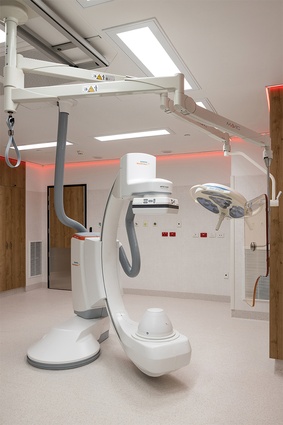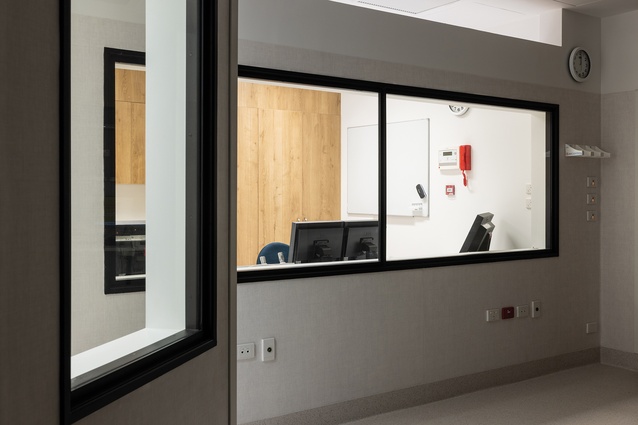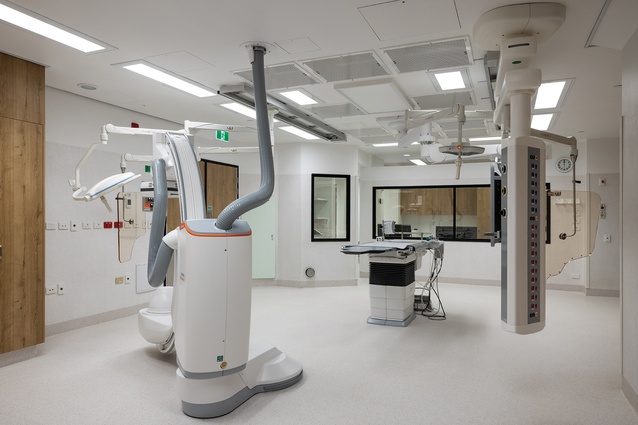Interior Spaces: A balancing act
Amanda Harkness looks at Klein’s new Cardiac Catheter Laboratory for Te Whatu Ora Counties Manukau and finds there’s a lot going on behind the scenes.
When it comes to highly functional clinical spaces, design is necessarily driven by function but the best outcomes can be seen when designers are able to create the perfect balance between the needs of the clinicians, the expectations of the facility and the patient’s overall experience.
Evidence-based salutogenic principles would point to feelings of nature, views to the exterior, natural light and neutral tones offering patients the most comfortable environment for procedures such as those carried out in a catheterisation lab. However, delivering this experience can be somewhat constrained by fire-rating, hygiene, safety and engineering requirements.
“From the outset, the engineering considerations are very exacting,” says director at Klein, Michael Lawler. “The floor slabs must be super level, plus or minus 3mm over six or seven metres, and the steel in the ceiling must be strong enough to support pendants and heavy equipment because any movement could distort the live imaging.” The machines used in these labs can weigh up to 650kg.
“There is a lot of science in choosing the right materiality,” explains Connie Zhang, associate at Klein. The architects worked closely with a physicist to ensure the lab’s walls, doors and control-room windows provide the required lead equivalent shielding (1.5mmPb). “X-ray shielding is needed around the entire space to protect staff and patients from radiation. We used three layers of X-Block to very specific detailing, even behind all the services, such as light switches and electrical sockets.”
As a ‘cardiac protected’ area, everything, right down to the flooring, has to be bonded (earthed) so there is no static charge in the room. Focused task lighting in the ceiling is carefully placed to avoid any shadows created by the surgeons, dimmable LED strip lighting helps the patient feel more calm before the procedure and a high-pressure timber laminate provides a residential feel to walls and doors. With subtle moves such as these, coupled with an exacting attention to detail, Klein has elevated the usual sterile procedural environment to something quite special here at Counties Manukau.
The Interior Spaces series is brought to you by GIB ® in partnership with ArchitectureNow.
Learn more about GIB X-Block® Radiation Shielding Systems in the video below:
ArchitectureNow works with a range of partners in the A&D supply sector to source appropriate content for the site. This article has been supported by GIB.














